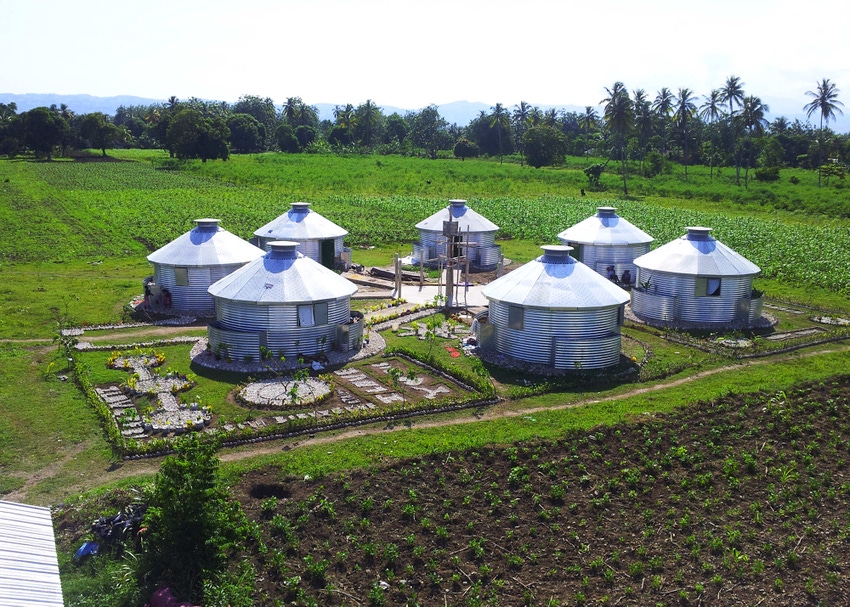October 11, 2016

The island nation of Haiti will always hold a special place in my heart. I've traveled three in mission three times, and been able to get out of Port au Prince a couple of times to work in the country and meet the people. The nasty Hurricane Matthew seemed to set its sights on Haiti from the start, and when it slammed across the island it targeted areas that had basically been missed by the 2010 earthquake.
Every story I hear from Jeremie and Cayes is bad. The United Nations estimates that 90% of the buildings in Jeremie alone are gone, wiped out by 145-plus mile per hour winds and torrential rains. Today, those residents have no shelter, no clean water, no power - though in Haiti power is often a sometime thing.

Village of Hope in Haiti uses the Safe T Home structures, which have proven they can stand up to a hurricane.
There is an interesting ray of hope, and it has an ag connection. The folks at Sukup Mfg., several years ago working with GoServ Global started producing the Safe T Home. Built in the shape of short grain bins these 18-foot diameter steel structures offer shelter, and quick construction, in time of need. In the 2010 earthquake, Sukup and the charity sent the homes to Haiti, and in 2013, another 25 were sent down. There are now more than 200 Safe T Homes in Haiti.
Now after Hurricane Matthew another 24 are on the way. And why is this significant? It turns out those little steel buildings can stand up to wind and rain. According to GoServ Global, while the devastation is measured at the 90% level in hardest-hit areas, all 200 Safe T Homes from Sukup in Haiti are still standing.
That's an incredible figure. These easy-to-assemble homes, once properly anchored in place can take a beating, and also offer quick construction for building shelter. In fact, GoServ reports in a media release that at least 60 people were crammed into one home in the John 3:16 Village in Haiti. All those people were kept safe.
While I don't see the future of Haiti filled with steel-built mini-bin homes, having this kind of quick-to-assemble structure available for relief is a tremendous help for any location that needs this kind of housing.
Engineering approach
In a Sukup release, Charles Sukup, president of the company, remarks: "The whole idea behind the Safe T Home was to take the same engineering principles we used to help farmers protect their crop from the harsh weather conditions of the Midwest, and apply them to provide safe and secure shelters for people in underdeveloped parts of the world."
The company is committed to the Safe T Home relief effort and usually keeps 11 of the kits on hand for quick response. Matthew's slam into Haiti has the company increasing that number to 24.
I'm excited that there can be help for folks in need. I know the Haitian people are resilient, but Nature sure is asking a lot. When a group like this can help, it's a good thing. If you want to know more about the effort, you can check out goservglobal.org.
Often companies serving agriculture step up with financial support and other kinds of aid in times of crisis. Sukup has created a product that has now shown it can really stand up to trouble. Thanks.
You May Also Like




